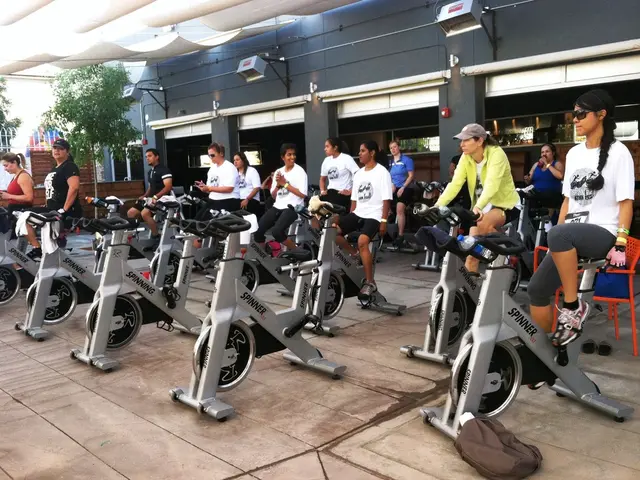Run coaches reveal the common impediment hampering most distance runners and offer strategies for overcoming it
Enhance Your Running and Prevent Injuries: Focus on Trunk Stability
Jude Palmer, a certified running coach, recommends a surprising approach for improving your running performance: improving your trunk stability, achieved through daily routines rather than gym exercises.
"If you can't brush your teeth while standing on one leg, don't rush to the gym," says Palmer, the founder of Run Surrey Hills. "Improving stability begins at home."
Unstable moves like standing on one leg strengthen your core, crucial for efficient movement, balance, and injury prevention. Palmer suggests incorporating these moves into your daily routine by brushing your teeth while standing on one leg, for instance.
An inefficient posture due to poor trunk stability tends to hold many runners back, explains Palmer, as it impairs proper running form. Running with an upright posture allows for a greater range of motion and creates more space in your torso to breathe.
Besides enhancing your running, strengthening your core also yields benefits such as improved balance, ability to lift and reach while unstable, and reduced risk of fall-related injuries. Indeed, fall-related injuries are among the leading causes of premature death, according to the World Health Organisation.
To improve trunk stability, Palmer proposes a three-step approach:
- Balance Test: Palmer suggests starting with a simple balance test. Stand on one leg and perform small movements like bending to the left or right. If this proves difficult, spend time working on these basics before jumping into advanced exercises.
- Introduce Instability: Train your body to handle instability by incorporating balance training into your daily routine. Stand on one leg while brushing your teeth or waiting for your tea to brew. Reaching for items while unstable will help strengthen your legs and core.
- Maintain Variety: To progress further, Palmer emphasizes the importance of mixing exercises. If you can hold a plank for two minutes, challenge yourself with variations like letting someone push you while holding the plank or practicing on uneven surfaces.
Jude Palmer's message is that strengthening your core considerably contributes to a successful running experience while offering numerous lifestyle benefits. A focus on core stability in daily life may prove more effective than advanced gym routines.
- To complement your running and prevent injuries, consider strength training focused on your core, as suggested by Jude Palmer, a certified running coach.
- pairing fitness-and-exercise routines like sports and health-and-wellness activities with science-backed strength training can yield significant improvements in running performance and general well-being.
- Employing a three-step approach, including trunk stability tests, balance training while performing daily tasks, and maintaining exercise variations, can help strengthen your core to enhance running efficiency, reduce injury risk, and improve overall balance and fitness.







